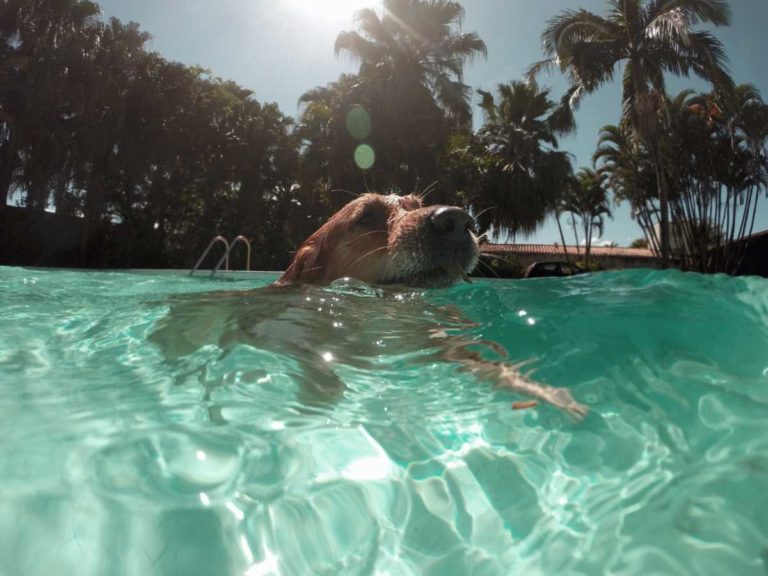It’s important to do your research if you’re considering adding a Labrador to your life so that you have realistic expectations about the energy demands, personality, and lifestyle that a Lab will bring.
In this section on FAQs About Labradors, we’ll answer some of the most Frequently Asked Questions about Labrador Retrievers to help you decide if they’re right for you!
How Much Does a Labrador Retriever Puppy Cost?
A typical Labrador Retriever puppy from a breeder will cost (in the United States) between $500-$2000, or more. This will vary greatly depending upon the breeder you select, your location, and what kinds of characteristics a breeder is breeding for.
For example, if you want a specific hunting dog or future show dog from championship lines, you should expect to pay much more for a puppy who’s been bred for this purpose. Read more about choosing the right Labrador puppy in our guide here.
Beyond the puppy stage, Labradors can bring many expenses, both planned and unexpected. Read more about the cost of owning a Labrador in our guide to pet expenses.
How Do I Find a Good Labrador Breeder?
A reputable breeder can be difficult to find, and with Labradors being the most popular dog in the United States, there are so many of them. You’ll want to get referrals from friends and family, explore online Labrador groups, and research breeders online and in person, if possible. You want a breeder that is honest, open, ethical, and tests for health issues in their dogs before breeding them.
For more on this subject, we have everything you need to know in our complete guide to help you choose the best breeder here.
How Big Do Labradors Get?
Male Labradors grow to full size to become usually between 70-100 lbs, and female Labs between 55-70 lbs. The typical weight for an average Labrador is 55-80 lbs. This can vary depending on what specific type of Labrador you get, and what features the breeder you use is breeding for.
Labrador height can depend on specific breeding traits, but Labs are typically between 21.5 and 24.5 inches at the shoulder.
If you’re concerned about how big Labs get, and whether you can have a bigger breed like a Lab if you’re living in a smaller living space, read more in our guide to living in apartments with big dogs for some strategies to help make it work.
Are Labradors Hypoallergenic Dogs?
No dog can be guaranteed to be a hypoallergenic dog, and Labradors would not be considered hypoallergenic. Labs do shed in large amounts, and because of this high shedding, there might be more dander present that would aggravate someone’s allergies to dogs.
There are some other breeds of dogs that may be less likely to provoke your allergies, which we go into detail about in our article on the Truth About Hypoallergenic Dogs.
How Long Do Labs Live? What’s Their Life Expectancy?
The average life expectancy for a Labrador Retriever is 10-14 years, depending upon health issues and what type of Lab you get. Recent research indicates that chocolate Labradors have a slightly shorter life expectancy of 10.7 years.
For more details on how long Labs live, including the Labrador lifespan for yellow Labs, black Labs, and chocolate Labs, read our guide to the Labrador life expectancy here.
Are Labradors Good with Children?
Labradors are usually excellent dogs for families with children, due to their friendliness, trainability, happy temperaments, and playful energy.
As with any dog you get, you’ll want to socialize and train them properly and teach your children good behavior when interacting with dogs to encourage a great relationship from the beginning.
What Health Issues Do Labs Sometimes Have?
Labradors Retrievers are prone to some health issues including joint issues, retinal atrophy, allergies, exercise-induced collapse, cancer, obesity, and heartworm disease.
Some of these health issues are concerns that breeders can test for before they breed their dogs. We recommend you make sure your breeder has provided you with the health information of the parent dogs before you select a puppy from them.
What Color Labradors Are There?
There are only three accepted colors of the breed standard by the American Kennel Club and the Labrador Retriever Club. Those colors are yellow, black, and chocolate Labradors.
You might see other colors mentioned such as Dudley Labs, white Labradors, and fox red Labradors, but those fall into the three main color categories mentioned above. Silver Labs are also sometimes mentioned, but there are some controversies associated with that color.
To help you decide what color Lab to get, read through our guide on What Color Labrador is Best?
Are Silver Labs Considered “Purebred” Labs?
You might find silver Labrador breeders, but silver Labs are not a recognized color by the American Kennel Club. This is a bit of a controversial topic because some have argued that silver Labs also possibly possess genes of the Weimaraner dog breed.
The AKC has allowed silver Labs in the past to be registered as purebreds, but the color silver is NOT permitted in dog shows. Be aware that if you want to eventually show your dog, the color silver is currently inadmissible.
How Much Grooming Do Labradors Need?
Labradors require occasional bathing but do not require as much grooming as other dog breeds. You don’t need to shave them, give them summer haircuts, or take them to the groomer on a regular basis. Labs can require frequent nail trims which can be done at home or at the vet’s office.
For more details on how often to bathe your Lab, and what other grooming they need, read our article on bathing and grooming for Labrador Retrievers.

Trying to decide on what breed of dog to get for your next puppy? It can be a very difficult decision trying to find the best fit for both you and your future dog.
We hope this list of FAQs about Labradors has answered some of your top questions as you get to know this wonderful breed of dog. As the most popular dog breed in the United States for the last 30 years, Labradors have won the hearts of many people who’ve selected them over and over as the perfect dogs for them.
(This article may contain affiliate links. As an Amazon Associate I earn from qualifying purchases. Learn more)
Let us know if you have more FAQs about Labradors and we’ll add them to the list and answer them here.








We have just acquired a 9month old female black lab. Great dog,we’ve had chocolates in the past. This one has sever separation issues. Even for small amounts of time she acts completely different when we return…..
Congrats on your new Lab! Do you know her previous home history? She might have had anxiety in her previous surroundings or been in an environment that might not have been the most stable (or happy). Thank you for adopting her! Try to keep her on a steady and consistent routine, give her lots of positive encouragement, and talk with your vet about her separation issues. They might improve over time just being in a stable home like yours, but ask your vet for advice on whether her behavior seems like it’s excessive separation issues or whether it’s within the scope of normal adjustment!